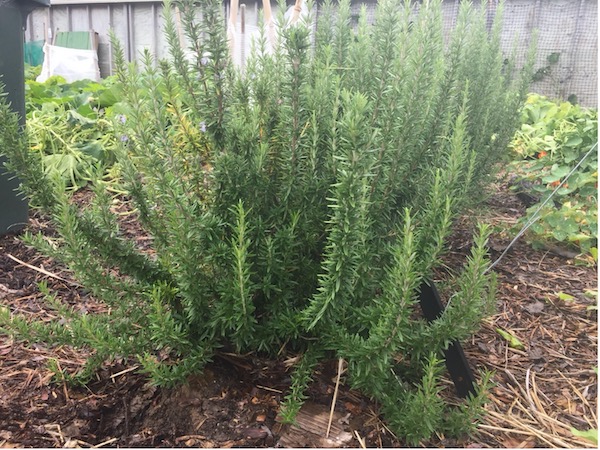If you grow nothing else, have a go with herbs – they’re truly easy and rewarding. Nothing beats being able to go out the back or front door to pick fresh herbs for meals, and it costs so much less.
Grow them close to your kitchen, so it’s easy to pick them, regardless of weather. It’s also easy then to attend to them.

The most important thing when growing herbs is to understand the difference between wet-loving herbs and dry-loving ones.
Both groups like completely different conditions, so you can imagine if they’re grown together, neither will do well.
Wet-loving herbs are parsley, mint, coriander, dill, chervil and chives. Dry-loving herbs are often called Mediterranean herbs and are thyme (French thyme for summer and English thyme for winter), oregano, rosemary, tarragon and sage. Basil is kind of in a category of its own – it likes water but is of Mediterranean origin and whereas all the other herbs will grow all year long, basil really only does well in summer.
Wet-loving herbs
Best planted twice a year – in spring and autumn. Best planted in the garden, as a garden bed provides more even moisture, and herbs like parsley have a long tap root. At the time of planting add chicken manure or sheep pellets for good leaf growth and rock dust or a well-balanced fertiliser for nutrients.
Mint grows well in a pot with the bottom cut out of it. If you don’t contain it, you’ll find it popping up everywhere in your garden. After 6 months or so, you can chop it back hard or re-plant a small piece of the old plant.


These herbs require regular (in hot conditions, daily) watering. There’s an old saying that mint is best planted by a dripping tap. Coriander definitely requires regular and frequent watering.

Dry-loving herbs

These herbs will do well in a container as they’re shallow-rooted and don’t mind drying out. When planting, either in a container or the soil, add rock dust or a well-balanced fertiliser for nutrients, but there’s no need to add anything else. If you think of where they come from, you’ll understand why these herbs almost thrive on neglect.
They’ll flower once a year, and after flowering give them a good trim back, another dressing of rock dust, and they’ll perform well for you for another year.
Basil
We plant basil in amongst our tomatoes as a companion plant. Basil enhances the flavour of tomatoes and its smell wards off bad insects. It does enjoy being kept moist, so being in with tomatoes which get watered regularly is ideal. Basil flowers easily, so keep chopping it back to maintain continuous growth.


Getting started
You can grow most herbs from seed, but rosemary and mint, because they’re woody, are two that are best grown from cuttings.
Herbs make a meal special and they’re attractive plants in your garden!
-----
Organic Edible Garden’s vision is to make organic edible gardening achievable for everyone. Visit their website for Getting Started videos, and regular blog posts to find out what to do in your edible garden.
Read more

At one of this year’s Christmas parties, I managed to wear my ugly Christmas sweater for about 5 minutes as I walked from the venue to my car, long after my regular bedtime - yet another reminder t...

At one of this year’s Christmas parties, I managed to wear my ugly Christmas sweater for about 5 minutes as I walked from the venue to my car, long after my regular bedtime - yet another reminder t...






